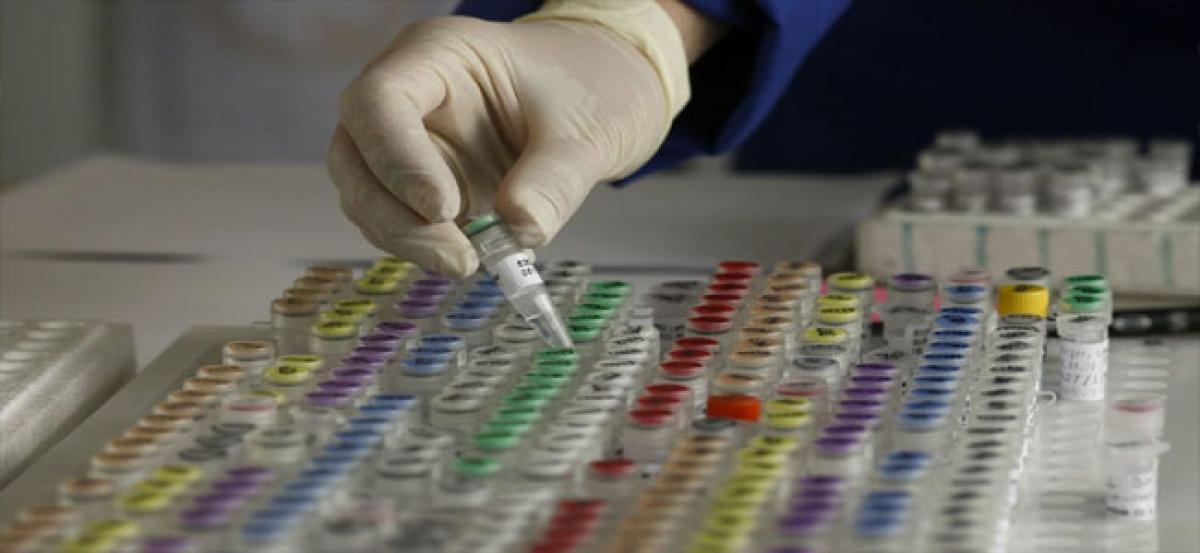Live
- Congress eyes opening of account in Prakasam
- World’s highest polling station in HP has 52 voters
- Zero voter turnout in 6 Nagaland dists
- PM takes ‘atta’ dig at Pakistan
- Cong outdated: Rajnath
- Anantapur: Give no more chances to Jagan says Chandrababu Naidu
- Congress strategy to outwit BJP in North Telangana
- Festival of Demiocracy: 62% turnout in phase 1
- MyVoice: Views of our readers 20th April 2024
- Is US Prez weighing climate emergency declaration soon
Just In
Gene therapy, biotechnology can help tackle deforestation, air pollution


Gene therapy and biotechnology can be used to tackle environmental issues like deforestation and air pollution, while genetic modification in mosquitoes can solve the problems of epidemic diseases such as dengue and malaria, experts said here on Tuesday.
Kolkata : Gene therapy and biotechnology can be used to tackle environmental issues like deforestation and air pollution, while genetic modification in mosquitoes can solve the problems of epidemic diseases such as dengue and malaria, experts said here on Tuesday.
"Gene therapy is very promising in solving the problems in curing diseases and genetic disorders that do not have any remedy at present. Genetic modification in mosquitoes can solve the problems of epidemic diseases such as dengue and malaria," Nabarun Ghosh, a biology professor at West Texas A&M University, said while addressing school students at Science City here. Biotechnology can help in finding out the level of Particulate Matter 2.5 in the air, which is a burning issue in big cities around the world, he said.
"I worked in collaboration with another scientist, to make a filterless air purifier that will clean the air and destroy PM 2.5 which is found indoors as well. In 2005 when we started we were targeting MRSA (methicillin-resistant Staphylococcus aureus) bacteria. We used AHPCO Cell (Advanced Hydrated Photocatalytic Oxidation Cell) and we could actually measure the saturation of PM 2.5 using our machine," said Ghosh. Researches are being conducted to find out the genetic effect of PM 2.5.
He said that to treat the patients of the state and know about the genetic effect, they need the data of PM 2.5 level of the entire state, adding that in Kolkata, the US Consulate maintains some data on it, while the West Bengal Pollution Control Board at times has it and, on other occasions, does not. The city's real-time Air Quality Index recorded in the last 48 hours revealed PM 2.5 level at 154, which is termed as unhealthy for the body.
The safe levels of PM2.5 and PM10 are 60 and 100 microgramme/m3 respectively, and anything beyond is considered hazardous for the respiratory system. About Zika Virus, Ghose pointed out how scientists in the US used 25,000 mosquitoes and ran a trial to see if the population of 'Aedes aegypti' could be reduced. It was found that the disease-causing mosquitoes were infected with a bacterium called wolbachia, that affects reproductive ability, leading to infertility.
An alumnus of Hare School and Calcutta University, Ghosh, who has worked along with Department of Non-conventional Energy Sources (DNES) on the application of tissue culture technology in crop development, said it can tackle deforestation. Bitter gourd can act as a preventive against diabetes and Triphala against cancer. dures," Varshney added.

© 2024 Hyderabad Media House Limited/The Hans India. All rights reserved. Powered by hocalwire.com






